Motorcycle.com

Thursday afternoon at 3 pm, the phone rings. It's Aaron Stevenson, director of the Cornerspeed Rider School. He's got an opening in his class on Monday? Monday? As in next week, Monday? As in four days from now Monday? I try to explain to Aaron that I'm not ready, that I don't have leathers, that my bike is in various states of disassembly. No problem he says, We rent leathers and the prep required for your motorcycle is minimal. It takes no more convincing. I'm in.
No matter what type of motorcycle you own, from a 1908 Indian to a Ducati Desmosedici RR, you can probably find a place in the US to race it. The first decisions the budding road racer needs to make are what type of road racing to do and where to do it, as there is a myriad of national and regional race organizations. Find the one that best fits the type of motorcycle you want to race and the type of racing that you want to do.
Swapping Fluids
1. Place the appropriate container underneath and drain the coolant out.
2. Flush the system with water until you no longer see any green.
3. Replace the drain plugs, making sure to install new crush washers.
4. Refill the system with water to the approved level. You will probably want to put an additive in the water, like Redline's Water Wetter. Water Wetter lowers the boiling point of water and resists corrosion in your cooling system.
5. Start the bike and let it run for a few minutes to circulate the water and get the air out of the system.
6. Re-check the water level and re-fill if necessary.
7. Save the anti-freeze to put back in if you keep your bike in un-heated storage during the winter months. If you leave plain water in your engine you run the risk of freezing and cracking cylinders and cases.
When Stevenson called me, the Ducati 748 that I would be riding was sitting in pieces in anticipation of its transformation into a race bike. I had expected this to be completed long before I attended a track school.
With its stripped down state giving easy access to the cylinder heads, I gave the Desmoquattro valves a quick check, before reassembling the entire thing, leaving off the pieces I knew I wouldn't need. I then taped over the empty holes in the fairing. My Pilot Powers were almost new and track worthy, chain and sprockets were nearly new, engine oil was changed, coolant drained and replaced, safety wire added in the appropriate locations - I was ready to go.
The requirements to prep your bike for a track school, like the schools themselves, vary. Some schools require almost nothing to be done, while others require your bike to meet the tech requirements of a race organization. At a minimum, you need to replace the anti-freeze in your bike's coolant system (if you have a liquid cooled engine) with water.
The component in anti-freeze that keeps water from freezing is ethylene glycol, an alcohol substance that is slick as snot (hence the green color of anti-freeze). If your bike's cooling system was to overheat and boil over or a crash was to break your hoses or radiator, the greasy liquid would pour all over the track.
Track personnel will tell you that anti-freeze is harder to clean up than oil. Water will evaporate or can be dried off with a heater. Anti-freeze can shut down the track for a day. Don't even attempt to get away with skipping this rule. You'll have some very angry people on your hands if they catch you with anti-freeze in your radiator.
Most schools will also require you to remove the mirrors and turn signals, or at a minimum tape over the glass and plastic to prevent it from littering the track in case of a crash. Headlights and taillights should be taped over too.
If your bike is equipped with a center stand you will probably have to remove it to prevent it from dragging. Side stands can be removed or zip tied up so you don't find out in your first left hand turn that you forgot to put it up. This means you'll need to have a rear stand to support your bike when you're not riding it.
The requirements to prep your bike for a track school, like the schools themselves, vary.
Some schools require safety wiring. Safety wiring provides several functions. Firstly, it prevents bolts and caps from vibrating loose and landing on the track. Secondly, it provides a way to glance at critical bolts and know that they've been properly tightened.
Basic safety wiring should include the oil fill cap, the oil drain plug(s) and the oil filter, if it is an external spin-on type. Spin-on oil filters can be safety wired by tightening a hose clamp around them and then drilling the head of the bolt on the clamp worm. An easier solution is to use a K&N brand filter which comes with a nut fixed to the bottom of the filter that is pre-drilled.
If you're planning to race your bike, you'll have to do this eventually anyway, so why not do it now. There are plenty of online guides on how to safety wire. Here are the basics:
Safety First
1. Make sure the bolt is tightened to the proper torque.
2. Plan where to run your wire, so that the wire will pull the bolt in the direction it tightens.
3. Mark the spot you plan to drill with a marker.
4. Use a center punch to make a light mark in the metal.
5. Use a 1/16 in. drill bit to make your holes.
6. Drill a hole in another nearby part; a bolt head, an engine fin, etc.
7. Cut a piece of wire that will run between the two holes (make it long enough that it will reach even after it has been shortened by twisting). Center the length of wire through the first hole. Take the equal halves and twist them together until they almost reach the second hole. Thread one of the untwisted pieces through the second hole and then twist the remaining two end pieces together (again making sure the wire is pulling the bolt in the direction it is tightened).
Safety wire pliers make the twisting job a whole lot easier and neater, making them a worthwhile investment. Notes on drilling near oil passages: Care should be taken when drilling into engine cases, oil drain bolts, etc. Make sure you know what's underneath by removing the bolt first. Don't leave safety wiring until the night before your track school, so you have time to fix any mistakes you might make.
Beyond this, it should go without saying that your bike needs to be in good mechanical shape. Tires should be new or barely worn. There should be no coolant or oil leaks. Your chain and sprockets should be in good condition, properly adjusted and lubed. Brake pads should have plenty of life left in them and all fluids should be checked. Not only will a mechanical problem end your race school prematurely, it can potentially endanger you or your fellow riders on the track.
Though many schools rent leathers, the rider is usually responsible for providing their own helmet, gloves and boots. For those looking to make an investment in good safety gear before their first track day, see the final article for more gear recommendations.
The next installment of ourRoad Racing Series sees Jeremiah taking his track-prepped Ducati to theCornerspeed Rider School. Be sure to come on back, you wont want to miss it!
Related Reading
Road Racing Series - Part 1
Road Racing Series - Part 2

Motorcycle.com presents an unrivaled combination of bike reviews and news written by industry experts
More by Motorcycle.com Staff



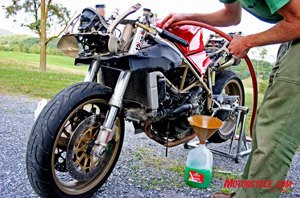






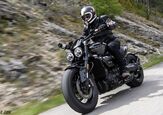

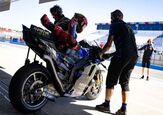


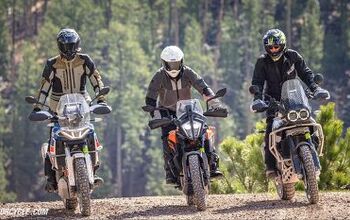



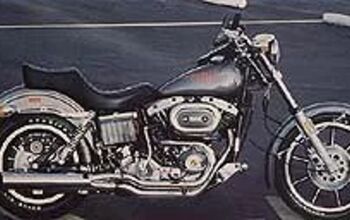












Comments
Join the conversation